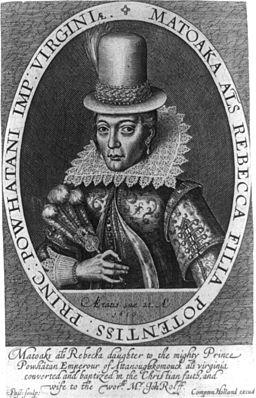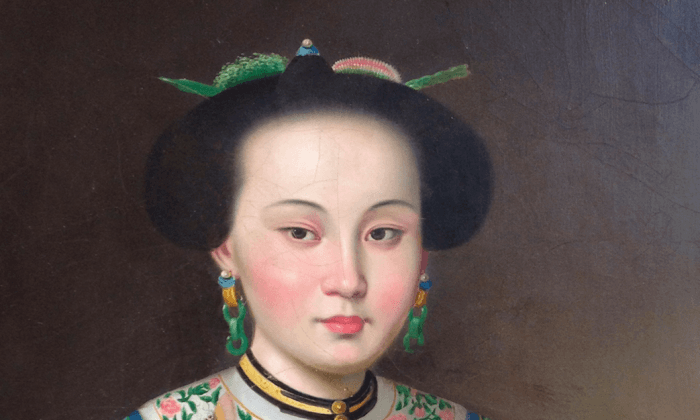Throughout history, portrayals of women have been used to further political, social, and commercial ends. In the Renaissance, women’s faces, bodies, and dress were carefully designed, sometimes fictionalized, to suit historical narratives or social mores. Sometimes they are meant to display alliance to a nation or people, or, on a smaller scale, her family’s wealth and position.
Here is a look at six women and how their images were shaped by their political and social landscapes. Sometimes these women had the power to formulate their own public image. Other times, they found themselves caught between opposing forces, where identity, ethnic, and religious rivalries dictated the way they were portrayed to the world and posterity.

1. Xiang Fei, also Known as the ‘Fragrant Concubine’
China’s Qing Dynasty Emperor Qianlong had many concubines, but his favorite was said to be Xiang Fei. Her name translates to “Fragrant Concubine” because she was said to have had a captivating natural scent.
How Xiang Fei became a royal consort remains a controversy. Some say the native of Islamic Xinjiang was captured and forcibly taken to the capital during the emperor’s land expansions into the western territories. Others say she went willingly and truly loved the emperor, and that he doted upon her, lavishing her with jewels and gifts and tried to ameliorate her homesickness as best he could.
The mystery surrounding her true relationship to the emperor, as well as the cause of her death (suicide, murder) and burial (not in her homeland) has gained a renewed significance in light of the current persecution of ethnic Uyghurs by Beijing’s communist regime. The narrative of her life has been, and continues to be, so wrought with contradiction, that different groups tell entirely different tales, depending on their political bent.
Several versions of Xiang Fei’s portrait exist and are thought to be the work of a Jesuit painter to the Qing court Giuseppe Castiglione or at least one of his followers. In most of the seated ones, she carries a delicate string of Muslim prayer beads though she wears Manchurian palace dress and her features are likely modified to align with traditional Chinese standards of beauty.
One version goes to auction Sept. 16, 2014 at Sotheby’s New York. The one pictured is in the private collection of New York collector Dora Wong.

2. Pocahontas
Forget the Disney version for a moment. Assuming the 1616 engraving of Pocahontas by Simon van de Passe is accurate vis-á-vis her facial features, her outfit and pose could not be more European.
After being captured by Anglo colonists during conflicts between tribes and settlers, Pocahontas converted to Christianity and married tobacco planter John Rolfe.
The engraving was likely commissioned by the Virginia Company, which hoped to attract more white settlers to their colony. Later representations would take further liberties, making her all but indistinguishable from any white aristocrat.
As the woman and the myth were conflated in the ensuing centuries, artists and writers increasingly depicted Pocahontas throwing herself at her supposed lover, John Smith, who her father the Powhatan chief had ordered to be executed.
PBS’s exploration of the different ways American and European artists have interpreted Pocahontas is worth a look.

3. Hatshepsut
Unlike most of the women on this list, the Egyptian ruler Hatshepsut had a lot of say over how her image was to be presented. In fact, as arguably the most powerful woman in all of Ancient Egyptian history, she knew that self-representation was a huge part of preserving her legacy.
As pharaoh between 1479–1458 B.C., Hatshepsut’s accomplishments included establishing trade routes and building ambitious projects that brought Egyptian architecture to new heights. Some of her landmarks still stand today.
The way Hatshepsut liked to be portrayed changed according to circumstance. Having grabbed power from her stepson, for whom she was acting as regent, Hatshepsut knew that she had to legitimize her reign through a PR campaign. Part of that effort was statues of her as a man, replete with the royal false beard. In other statues she appeared with breasts and in women’s dress.
Male and female elements are sometimes mixed. The Met Museum’s website describes a seated statue of her thusly:
“This life-size statue shows Hatshepsut in the ceremonial attire of an Egyptian pharaoh, traditionally a man’s role. In spite of the masculine dress, the statue has a distinctly feminine air, unlike most other representations of Hatshepsut as ruler.”

4. Charlotte Corday
Charlotte Corday is remembered for her role in the French Revolution. Corday was a sympathizer of the Gironde faction, which advocated the end of monarchy but opposed the violence of the Paris Commune. The Girondins’ greatest enemy was the radical journalist Jean-Paul Marat, whom Corday famously stabbed to death while he soaked in the bath (a frequent necessity for a skin condition).
She was executed by guillotine for her act. Today, Corday is now known as the “Angel of Assassination.”
Paul Baudry’s 1860 painting “Charlotte Corday” shows her up against Marat’s bathroom wall, hand still shaped as if coiled around the dagger that she had a moment ago lodged into Marat’s chest. Her expression is one of both determination and consternation.
Prior to the Baudry painting, the more famous portrayal was “The Death of Marat” by Jacques-Louis David in 1793. It lacked the heroine completely, and showed only the graying, pitiful corpse of the journalist, writing in hand, as he lies slain in the tub.
Unlike David, Baudry showed Corday’s agency, and sympathy for her having acted according to her conscience.
Artist Drew Lantrip writes about these two paintings in his Art Speaks article for Epoch Times.

5. Anna Short Harrington
The name Anna Short Harrington is much less recognizable than the name Aunt Jemima, but Anna was the model for the smiling black woman whose face is on bottles of maple syrup, biscuits, and pancake mix.
Harrington worked for Quaker Oats where she became the face of Aunt Jemima beginning in 1935.
In 1989, her image was modernized. It lost the bandana, slaves’ clothing, and exaggerated grin, but couldn’t escape its origins as a stereotype of a docile black domestic.
According to Fortune magazine, Quaker Oats is under pressure to rebrand the product line without the Aunt Jemima image. The company told Fortune that Aunt Jemima “invokes a sense of caring, nurturing and comfort—qualities revered by families around the world. We stand by this heritage as well as the ways in which we do business.”
Harrington’s great-grandchildren are suing PepsiCo Inc. and its subsidiary Quaker Oats Co. for damages and back royalties totaling $2 billion.
See the evolution of the Aunt Jemima image here.

6. Wallis Simpson
In the years leading up to World War II, the twice-divorced American socialite Wallis Simpson captured the heart of Edward VIII, king of England. Forced to choose between the throne and the woman he loved, Edward absconded against the wishes of the royal family and married Wallis, making her the Duchess of Windsor. The pair lived out their lives in style and comfort, traveling and throwing chic parties. The duchess, with her unconventionally androgynous looks, would become a fashion icon.
The only known painted portrait of Simpson is a 1939 one by British artist Gerald Leslie Brockhurst. She sits facing the viewer with a forthright and clear-eyed expression, her features painted more feminine than they appear in photographs. In photos, the duchess always looked glamorous and confident, and mostly happy.
Perhaps the Brockhurst portrait was meant to communicate the dignity and contentment she has found in her marriage to Edward. The top button of her modest dress is left undone, though, perhaps as an acknowledgement to the scandal of her past.
Wallis Simpson was most recently portrayed by a breezily brazen Eve Best in the film “The King’s Speech.”







Friends Read Free